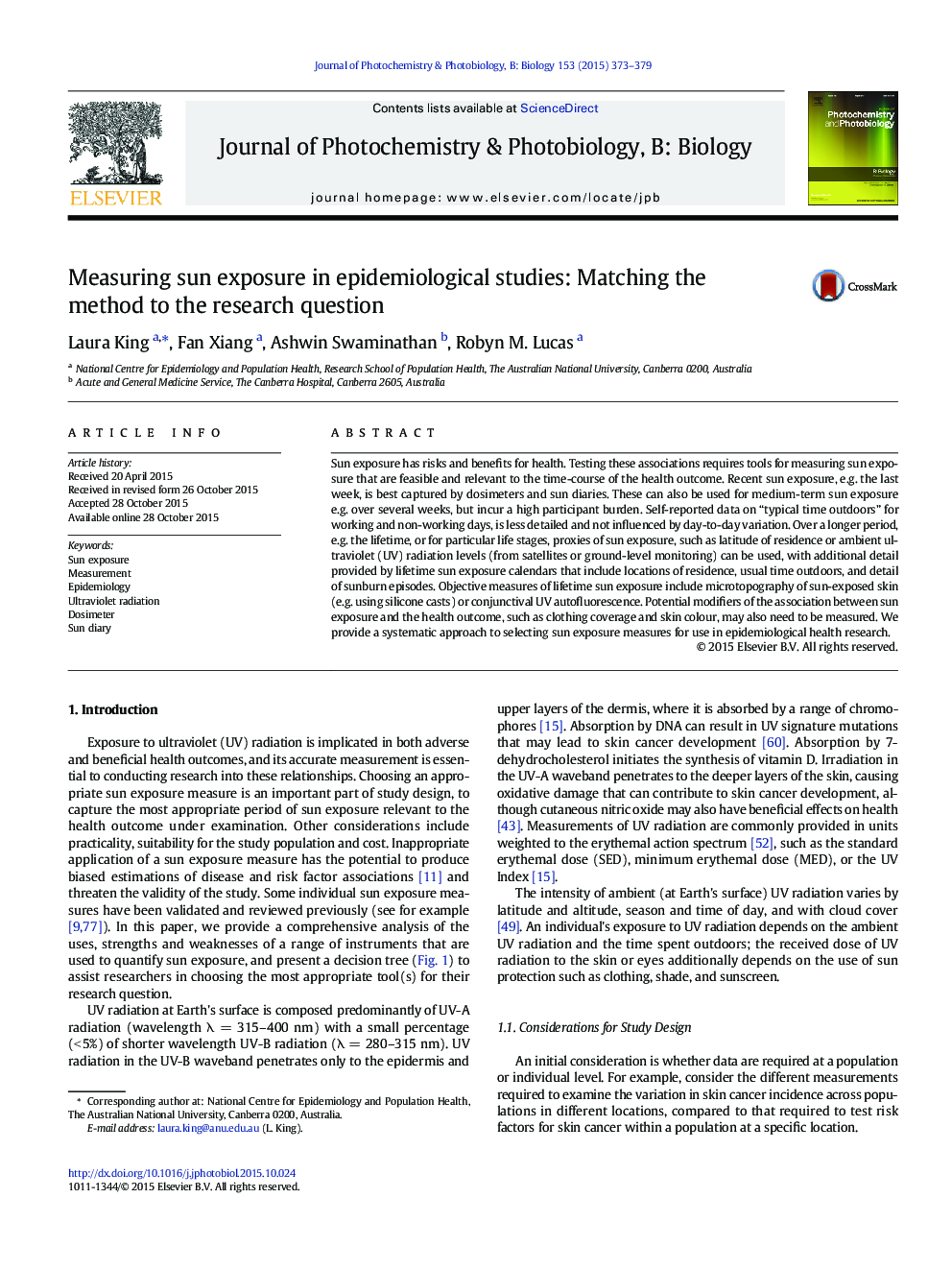| Article ID | Journal | Published Year | Pages | File Type |
|---|---|---|---|---|
| 30143 | Journal of Photochemistry and Photobiology B: Biology | 2015 | 7 Pages |
•Research examining sun exposure and health requires appropriate measurement.•Best measures depend on research question, feasibility, cost and participant burden.•We provide a systematic approach to selection of sun exposure measures.
Sun exposure has risks and benefits for health. Testing these associations requires tools for measuring sun exposure that are feasible and relevant to the time-course of the health outcome. Recent sun exposure, e.g. the last week, is best captured by dosimeters and sun diaries. These can also be used for medium-term sun exposure e.g. over several weeks, but incur a high participant burden. Self-reported data on “typical time outdoors” for working and non-working days, is less detailed and not influenced by day-to-day variation. Over a longer period, e.g. the lifetime, or for particular life stages, proxies of sun exposure, such as latitude of residence or ambient ultraviolet (UV) radiation levels (from satellites or ground-level monitoring) can be used, with additional detail provided by lifetime sun exposure calendars that include locations of residence, usual time outdoors, and detail of sunburn episodes. Objective measures of lifetime sun exposure include microtopography of sun-exposed skin (e.g. using silicone casts) or conjunctival UV autofluorescence. Potential modifiers of the association between sun exposure and the health outcome, such as clothing coverage and skin colour, may also need to be measured. We provide a systematic approach to selecting sun exposure measures for use in epidemiological health research.
